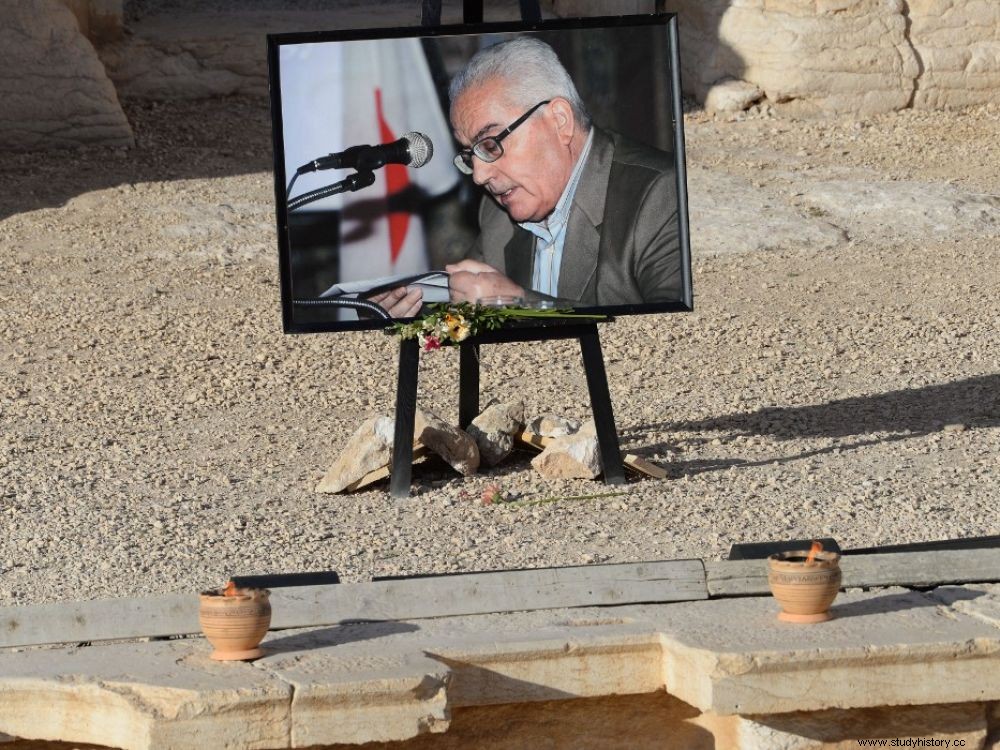Syrian authorities have said they have probably found the body of archaeologist Khaled Al-Asaad, who was executed in Palmyra in 2015 by Islamic State terrorists.

The portrait of Khaled al-Asaad, former director of Syrian Antiquities, brutally murdered in August 2015, presented during a tribute ceremony on the site of Palmyra, Syria.
This is a statement from the Syrian government agency Sana, which announced on February 7, 2021, the discovery of human remains of three people 10 km east of Palmyra, in Kahloul, near Homs, among which the body of the archaeologist Khaled Al-Asaad is believed to be.
Khaled Al-Asaad Bravely Saved Valuables
Former director of Syrian Antiquities from 1963 to 2003, then aged 82, he was beheaded on the site of Palmyra by the Islamic State (IS) on August 18, 2015. The archaeologist refused to indicate where were the valuables of the site that the terrorists had come to loot… Khaled Al-Asaad had actually had them hidden, very courageously, in a museum in the city of Tadmor.

The site of Palmyra (Syria), photographed on August 16, 2020. ©Hasan Belal / NurPhoto/ Via AFP
A shock wave in the world
The announcement of the atrocious death of this eminent archaeologist had caused shock waves in the world. For more than 50 years, he had devoted his life to the study of the site of Palmyra, northwest of Damascus. This brutal crime accomplished, the Islamic State had committed numerous abuses in the ancient caravan city of the 1 st and 2 th century listed as a UNESCO World Heritage Site. In particular the destruction of the Temple of Bel, just a week after the blasting of the Temple of Baalshamin, on August 30, 2015. These acts have been condemned by the United Nations as war crimes.
Since the site was fully liberated in 2017, with Palmyra taken over by the Syrian regime, "the UN estimates that more than 10,000 IS militants remain active in Syria and Iraq ", according to the BBC . DNA analyzes are currently underway to confirm the identification of the body of the Syrian archaeologist.
